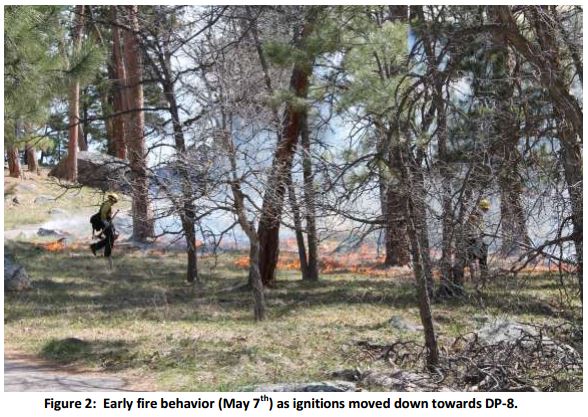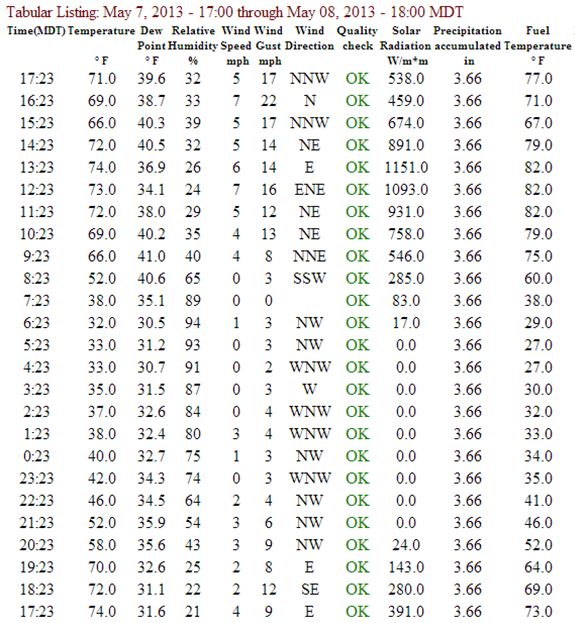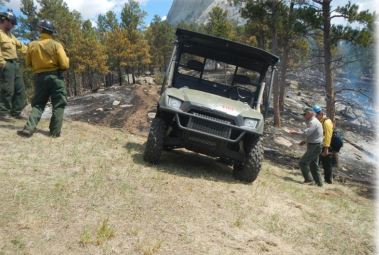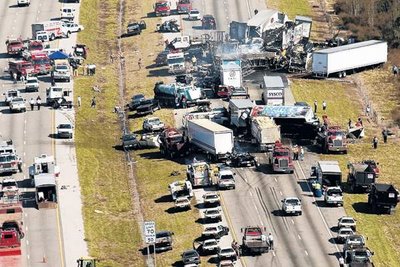(UPDATED at 12:42 p.m. May 7, 2014)
The wildfire near Guthrie, Oklahoma burned approximately 3,250 acres. One
civilian fatality is attributed to this fire and an estimated 46 structures have been lost, according to Oklahoma Forestry Services (OFS). The fire has been turned back to local command with all containment lines holding through Tuesday’s weather conditions. OFS will have a Task Force with 3 dozers and 3 engines assisting with patrol and mop up on Wednesday.
****
(UPDATED at 11:57 a.m. CDT, May 6, 2014)
The wildfire near Guthrie, Oklahoma continued to be active on Monday due to strong winds and low relative humidity. The weather forecast for Tuesday is similar, predicting Red Flag conditions, with 94 degrees, 23 percent relative humidity, and 24 mph winds gusting up to 33 mph. Tuesday morning the fire was reported to be 90 percent contained.
In the video below, Guthrie Fire Department Chief Eric Harlow provides an update on the fire. It was recorded May 5, probably late in the day, and was uploaded to YouTube on May 6.
Despite earlier reports provided by fire officials, investigators with the Oklahoma state Department of Agriculture and the state Fire Marshall’s Office have found no evidence the fire started as a controlled burn.
****
(UPDATED at 7:15 p.m. CT, May 5, 2014)
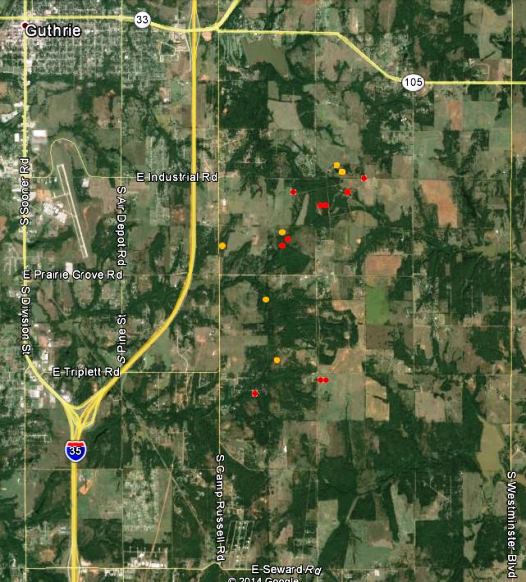
The location of the fire is southeast of Guthrie, Oklahoma, 24 miles north of Oklahoma City, and east of Interstate 35 (map).
The local fire departments have not released information about the exact location of the origin of the fire, but they did say it started from a “controlled burn” — which could mean anything from a resident burning trash in their back yard, to a rancher burning a pasture. Google Earth did not show any indication that any federal land was in the area of the fire.
Fox23 in a Monday afternoon report said at least a dozen homes have burned and the estimated size of the fire is now 3,000 to 3,500 acres. National Guard Blackhawk helicopters worked the fire Monday.
From Fox23:
Gov. Mary Fallin visited the command post Monday, and said the US Forestry Services crews were creating fire lines and that she put in a request to get an air tanker flown to Guthrie from Arizona.
According to the Oklahoma Department of Emergency Management three National Guard Blackhawk helicopters, two single engine air tankers (SEATs), and “a Tanker 415” will be available Tuesday evening. The “Tanker 415” could be Tanker 260, Aero-Flite’s CL-415 that was reported by Wildfire Today reader Tom Wilson (in a comment below) to be relocating from Florida to Oklahoma City on Monday. Fire Aviation had an article about Tanker 260 in November.
According to state law the Oklahoma Division of Forestry is the operational lead for wildfire emergencies.
The video below, uploaded to YouTube about 3 p.m. on Monday, has views of the fire from an aircraft.
****
(Originally published at 11:52 a.m. CT, May 5, 2015)
Fire officials said a controlled burn near Guthrie, Oklahoma escaped on Sunday and killed one person and destroyed at least six homes. Guthrie Fire Department Chief Eric Harlow said the number of damaged homes was expected to rise after they are able to better assess the four to six square mile (2,560 to 3,840 acre) fire after sunrise on Monday. About 1,000 people evacuated on Sunday, but most of those have been able to return to their homes.
Chief Harlow said the 56-year old man who was killed had refused to evacuate when requested by his family and law enforcement.
On Sunday the fire was pushed by strong winds and dry conditions. The weather forecast for the Guthrie area on Monday calls for similar weather — 100 degrees, 17 to 20 mph southeast winds gusting to 28 mph, and single-digit relative humidities.
Early Monday morning Chief Harlow said:
We still have some hot spots but for the most part we do have control of this thing. I’m still going to say 75 percent containment. Three of the four sides are contained. The north side I’m not going to say is 100 percent contained yet.
He said the fire started from a controlled burn on one of two properties, but did not know exactly what the land owner had initially intended to burn.
They have requested helicopters from the National Guard which would arrive at 11 a.m. at the earliest.
The video below is a recording of a live media briefing early Monday morning featuring Chief Harlow.




